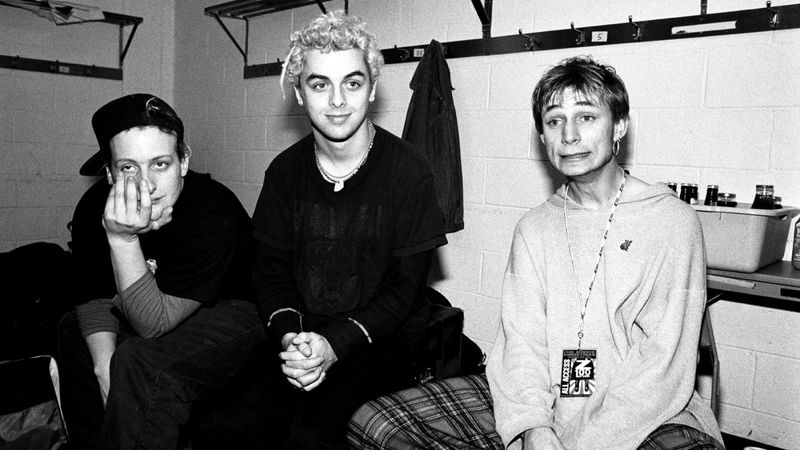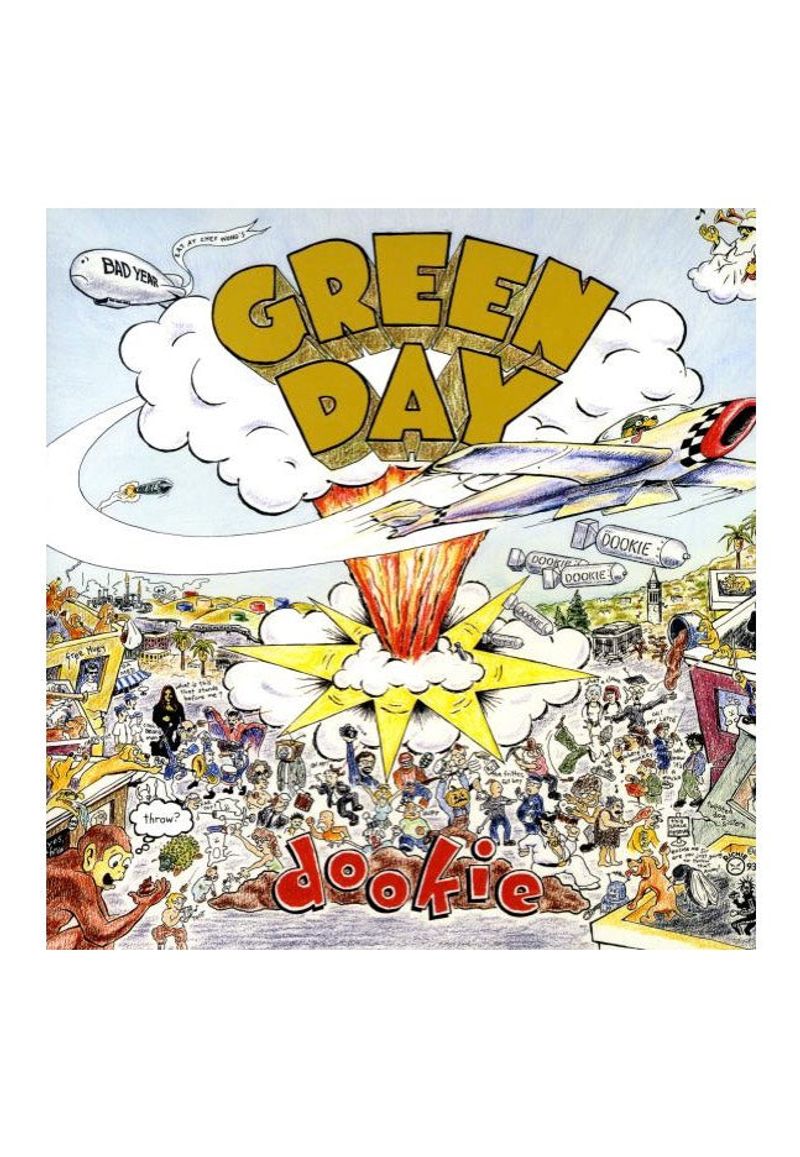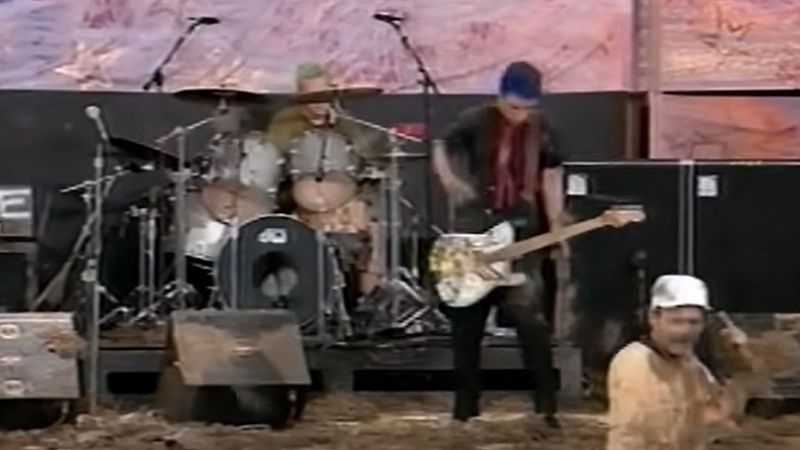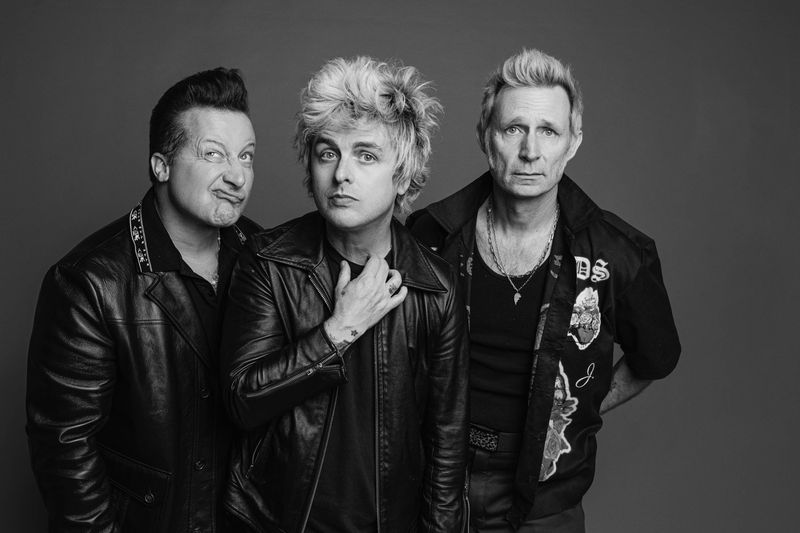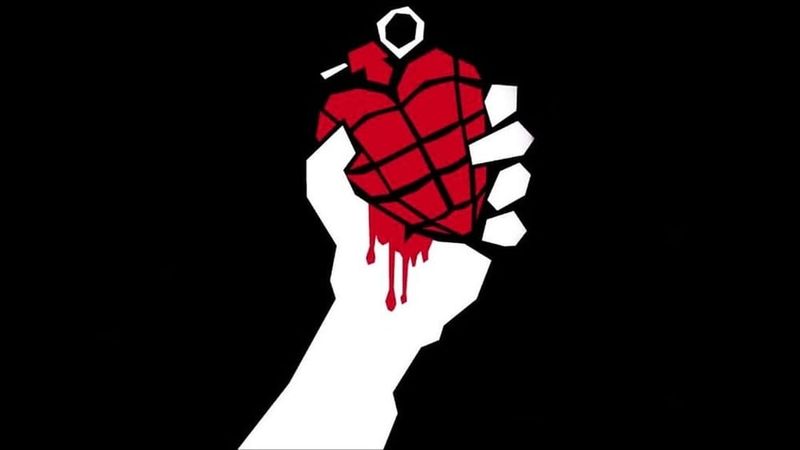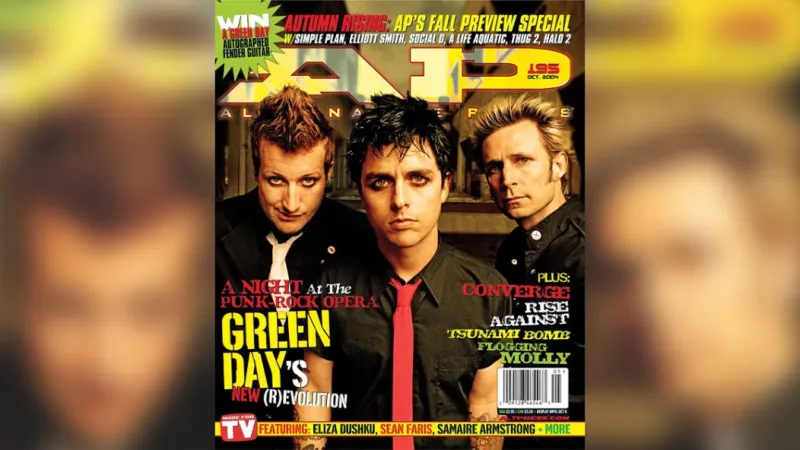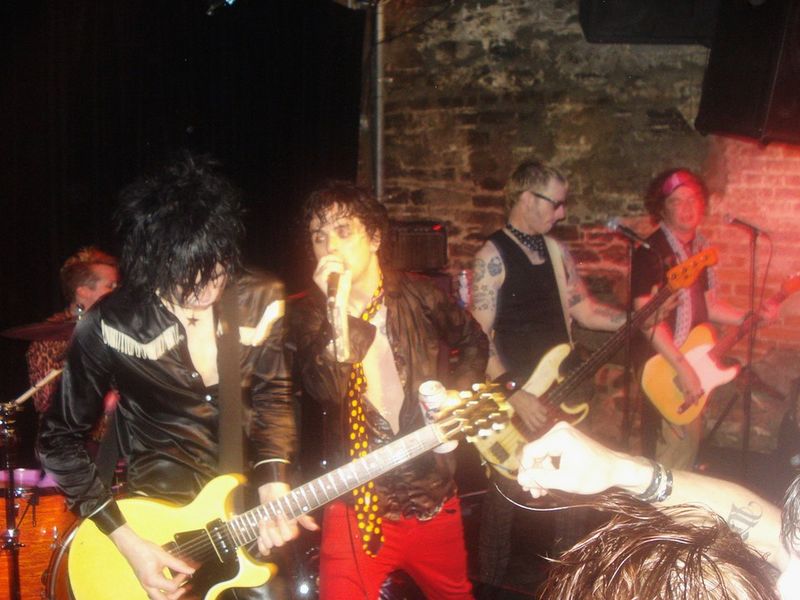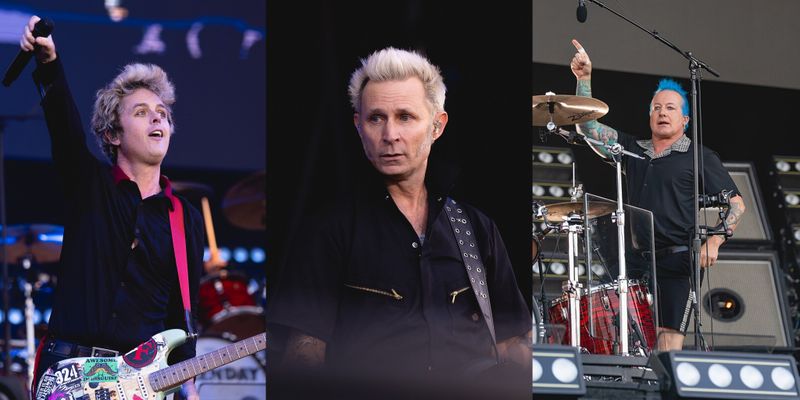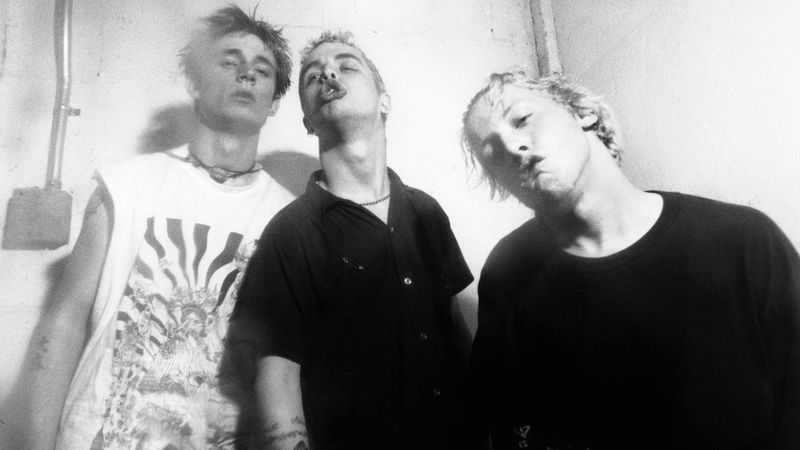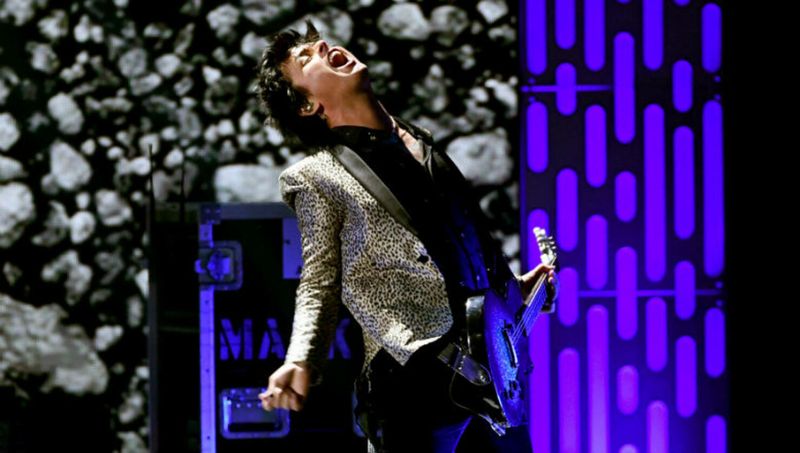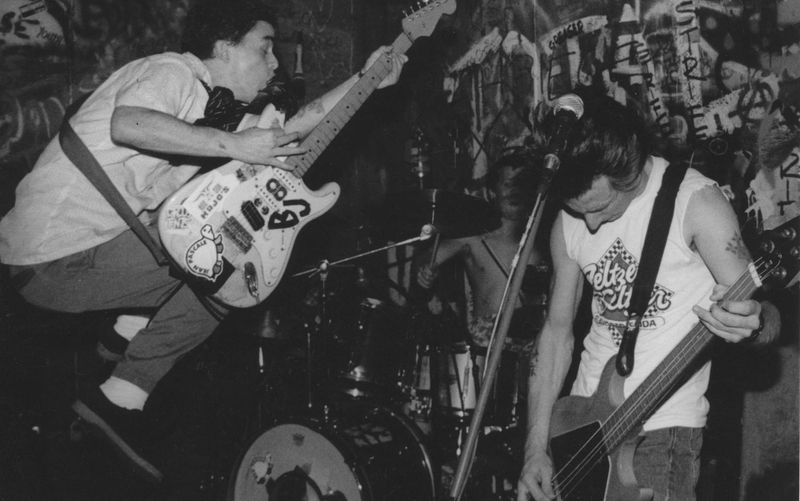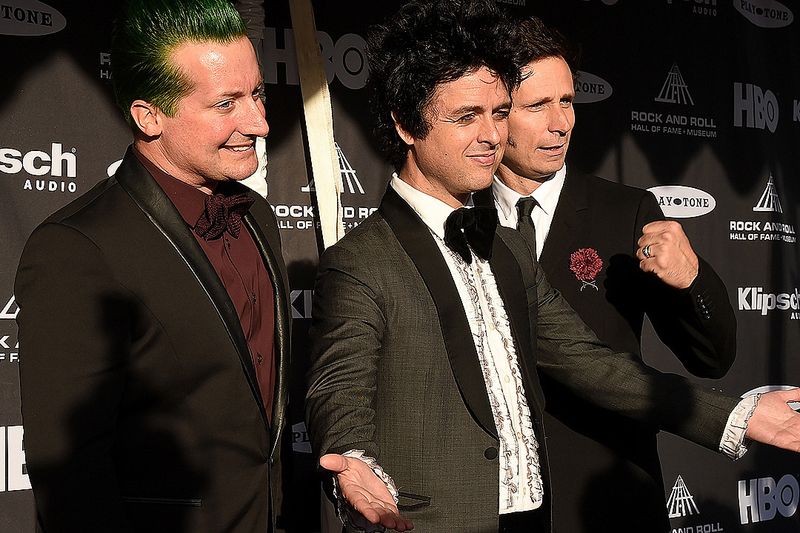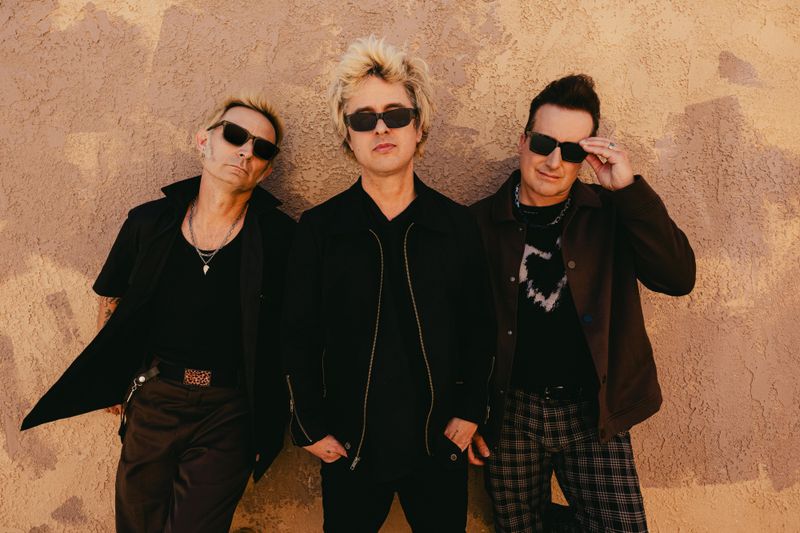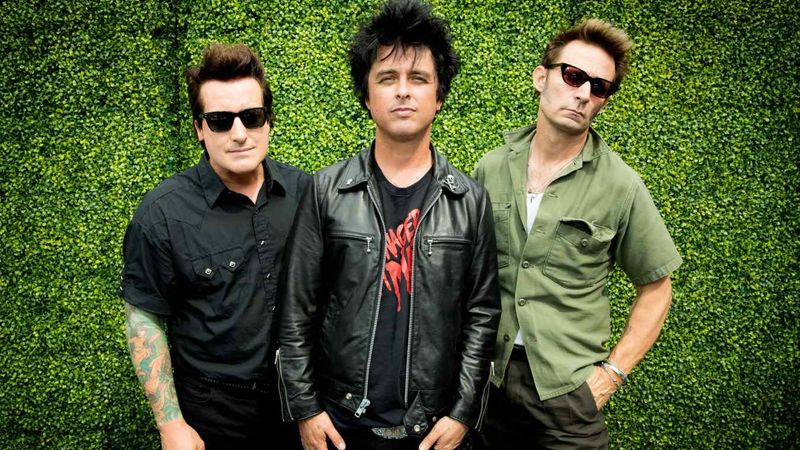Explore the transformative journey of Green Day as they evolved from punk upstarts in the early 1990s to global rock icons. Through various phases of experimentation, innovation, and resilience, Green Day has left an indelible mark on the music world. These 21 wild ways capture the essence of their unparalleled journey.
1. They Turned Garage Gigs into Arena Tours
Remember when Green Day was just a local band jamming in Bay Area basements? Fast forward, and they’re selling out Madison Square Garden. This leap from intimate garage gigs to massive arena tours was nothing short of meteoric. With electrifying performances and a connection to their roots, they captivated audiences worldwide. Green Day’s rise was not just about larger venues, but also about maintaining the raw energy that defined them. Their ability to adapt while staying true to their core was key to their success. It marked the beginning of their journey to global stardom.
2. They Signed to a Major Label—And Took Heat for It
In the early ’90s, Green Day faced a pivotal decision: signing with Reprise Records. This move catapulted them into the mainstream, but not without its share of criticism. Punk purists accused them of selling out, questioning their authenticity. Yet, this bold step was instrumental in their global takeover. It opened doors to larger audiences and greater opportunities. Despite the backlash, Green Day remained unapologetic, proving that their punk spirit was alive and well. This decision laid the foundation for their enduring legacy, highlighting their willingness to take risks for creative freedom.
3. They Dropped ‘Dookie’—And Punk Went Platinum
In 1994, Green Day unleashed ‘Dookie’ upon the world, and punk never looked back. Selling over 10 million copies in the U.S. alone, this album became a cultural phenomenon. With hits like “Basket Case” and “Longview,” it captured the angst and energy of a generation. ‘Dookie’ wasn’t just an album; it was a movement, redefining punk for a new era. Its success shattered records and expectations, propelling Green Day into the spotlight. This moment marked the transition from underground heroes to mainstream icons, solidifying their place in music history.
4. They Made MTV Their Playground
During MTV’s golden era, Green Day turned the network into their own personal stage. Their wild music videos, from “Basket Case” to “When I Come Around,” became iconic. With a mix of humor, rebellion, and raw energy, they captivated a global audience. MTV’s platform gave Green Day the visibility they needed to reach new fans and redefine the punk aesthetic. Their videos were not just promotional tools but cultural touchstones, influencing countless artists and fans. By dominating MTV, Green Day cemented their status as rock icons of the ’90s.
5. They Sparked a Mosh Pit on Woodstock ’94 Stage
In one of the most unforgettable performances of the ’90s, Green Day took the stage at Woodstock ’94, sparking a mud-soaked mosh pit that became legendary. The chaos and energy of that moment captured the essence of punk rebellion. Attendees were swept up in the frenzy, as mud flew and the band played on with reckless abandon. This performance wasn’t just a concert; it was a defining moment for punk rock’s mainstream resurgence. Woodstock ’94 showcased Green Day’s ability to captivate and provoke, solidifying their place in rock history.
6. They Rode the Wave of a Rebellious Youth Movement
Green Day became the voice of suburban teenage angst, riding the wave of a rebellious youth movement. Their music resonated with disenchanted teens searching for identity and belonging. With catchy hooks and relatable lyrics, they captured the essence of youthful rebellion. Green Day’s influence extended beyond music; they became cultural icons for a generation. Their songs were anthems of defiance and self-discovery, making them the voice of the disillusioned. This connection to their audience was vital in their evolution from underground band to mainstream success, setting the stage for future triumphs.
7. They Made Politics Punk Again with ‘American Idiot’
In 2004, Green Day shocked fans with ‘American Idiot,’ a politically charged rock opera that became a global anthem. This bold move reinvigorated punk’s political edge, addressing issues like war and media influence. The album’s narrative followed the anti-hero, St. Jimmy, through a disillusioned America. ‘American Idiot’ resonated with listeners worldwide, sparking conversations about politics and society. Its impact went beyond music, inspiring a new wave of politically conscious artists. This reinvention showcased Green Day’s ability to evolve while remaining true to punk’s rebellious spirit.
8. They Turned a Rock Album into a Broadway Hit
Green Day’s creative journey took an unexpected turn when ‘American Idiot’ transitioned from album to Broadway sensation. The rock opera’s theatrical adaptation brought punk to the stage, captivating audiences with its powerful narrative and dynamic performances. This bold move blurred the lines between music and theater, introducing Green Day to a new audience. The Broadway production’s success highlighted the band’s ability to innovate and adapt, proving that punk could thrive in unconventional spaces. By bridging music and theater, Green Day expanded their artistic reach and solidified their cultural impact.
9. They Reinvented Themselves—Again and Again
At the heart of Green Day’s success is their constant reinvention. From their grunge roots to pop-punk polish and theatrical rock, they never stayed in one lane. This adaptability kept their sound fresh and relevant, appealing to diverse audiences over the decades. Each phase of their career brought new influences and experimentation. Green Day’s willingness to evolve while maintaining their essence set them apart from their peers. This fearless approach allowed them to push boundaries and explore new creative territories, ensuring their enduring influence in the ever-changing music landscape.
10. They Used Alter Egos to Break the Rules
In 2008, Green Day took on alter egos as the “Foxboro Hot Tubs,” releasing an album that paid homage to 1960s garage rock. This playful experiment allowed them to break the rules and explore new musical landscapes. The project was a testament to their love for the genre and their desire to challenge themselves creatively. By stepping outside their usual identity, Green Day tapped into a different energy, showcasing their versatility and passion for music. This venture highlighted their ability to innovate while honoring the influences that shaped them.
11. They Refused to Follow Trends—And Set Their Own
Green Day’s journey is defined by their refusal to follow fleeting trends, opting instead to set their own path. This commitment to authenticity allowed them to maintain their edge in an ever-evolving industry. While genres came and went, Green Day stood firm, consistently delivering powerful messages through their music. Their dedication to their craft and audience was unwavering, allowing them to transcend trends and leave a lasting impact. By staying true to their vision, Green Day not only preserved their legacy but also influenced countless artists who followed in their footsteps.
12. They Took Risks on Triple Albums
In 2012, Green Day defied industry norms by releasing a trilogy of albums: ¡Uno!, ¡Dos!, and ¡Tré!. This ambitious project was a testament to their creative drive and willingness to take risks. Each album showcased a different facet of their musical prowess, from punk anthems to introspective ballads. The trilogy allowed Green Day to explore new themes and experiment with their sound. This bold move challenged the conventional album release cycle, proving their dedication to artistic exploration. It reinforced their reputation as innovators willing to push boundaries and redefine expectations.
13. They Played Secret Club Shows Under Fake Names
Despite their global fame, Green Day remained connected to their roots by playing secret club shows under fake names. These surprise gigs allowed them to reconnect with the underground scene that birthed their career. Performing in intimate venues, they recaptured the raw energy and spontaneity of their early days. These secret shows were a testament to their authenticity and love for their craft. By keeping these experiences alive, Green Day demonstrated that, despite their success, they remained true to the essence of punk: community, rebellion, and unfiltered expression.
14. They Crashed Awards Shows with Unforgettable Moments
Green Day has never been one to shy away from controversy, and their awards show appearances are proof. Who could forget Billie Joe Armstrong’s infamous “I’m not f***ing Justin Bieber!” rant at the iHeartRadio Festival? These unforgettable moments showcased their rebellious spirit and willingness to speak their minds. Green Day’s unapologetic presence at awards shows served as a reminder of their roots and refusal to conform. They’ve consistently used these platforms to make bold statements, reinforcing their status as rock icons unafraid to challenge norms and provoke thought.
15. They Brought Punk Back to the Grammys
When Green Day took the Grammys stage, they brought punk back to the industry’s most elite event. Their Grammy wins were more than accolades; they were a victory for the entire genre. By earning recognition at this level, Green Day validated punk as a serious and influential force in music. Their presence at the Grammys challenged the status quo, proving that punk could hold its own alongside mainstream genres. This achievement was a testament to their impact and the enduring relevance of punk rock, solidifying their legacy as trailblazers.
16. They Survived Rehab, Burnout, and Comebacks
Green Day’s journey hasn’t been without its challenges, including rehab and burnout. Despite these personal struggles, the band emerged stronger, proving their resilience. Their ability to confront these issues head-on and come back with renewed vigor speaks volumes about their character. Green Day’s transparency about these struggles resonated with fans, offering hope and inspiration. Their comebacks were triumphant, marked by renewed creativity and energy. This chapter of their story highlights the band’s unwavering dedication to their craft and their ability to overcome adversity, solidifying their place in rock history.
17. They Inspired a New Generation of Bands
Green Day’s influence extends beyond their own music, inspiring a new generation of bands like Fall Out Boy and Paramore. Their impact is evident in the sounds and styles of these artists, who cite Green Day as a major influence. By pushing boundaries and challenging norms, Green Day paved the way for future acts to thrive. Their legacy is reflected in the continued evolution of punk and alternative music. As mentors, Green Day’s role in shaping the next wave of musicians cannot be understated, proving their enduring significance in the music industry.
18. They Never Abandoned Their Roots
Despite their meteoric rise, Green Day never abandoned their roots, always honoring their beginnings at Gilman Street. This legendary punk venue played a crucial role in their early career, shaping their sound and ethos. Green Day’s connection to their origins remained strong, even as they achieved global fame. By returning to their roots, they stayed grounded and connected to the community that supported them from the start. This loyalty to their beginnings highlighted their authenticity and commitment to the punk spirit, serving as a reminder of where it all began.
19. They Got Inducted into the Rock and Roll Hall of Fame
In 2015, Green Day achieved a milestone that many bands only dream of: induction into the Rock and Roll Hall of Fame. This honor came just 25 years after they formed, a testament to their rapid ascent in rock history. The induction was a celebration of their impact on the music world and their enduring legacy. Green Day’s journey from punk upstarts to rock royalty was acknowledged on this prestigious stage. Their inclusion in the Hall of Fame cemented their status as one of the most influential bands of their generation, forever enshrined in music history.
20. They Keep Dropping Albums—Even After 30 Years
Even after three decades, Green Day continues to release new music, proving their relevance and creativity with each album. Their 2024 release, ‘Saviors,’ showcases their ability to evolve while staying true to their punk roots. This commitment to producing fresh content demonstrates their dedication to their craft and fans. Green Day’s longevity in the ever-changing music landscape is a testament to their adaptability and passion. As they continue to drop albums, they reaffirm their place as rock icons, pushing boundaries and inspiring new generations of music lovers.
21. They Stayed a Band of Brothers Through It All
Despite the challenges and pressures of fame, Green Day has remained a cohesive unit—a true band of brothers. Their enduring friendship and collaboration have been vital to their success. Throughout their journey, they navigated the ups and downs of the music industry together, supporting each other through thick and thin. This unity has allowed them to weather storms and come out stronger. By staying together, Green Day exemplifies the power of loyalty and teamwork. Their story is a testament to the strength of their bond and their unwavering commitment to each other and their music.

